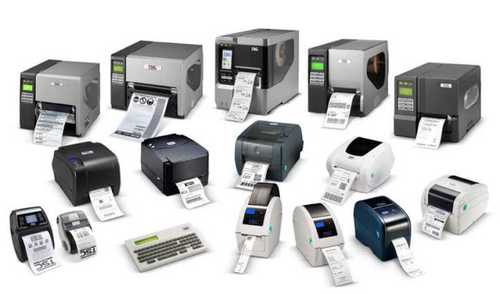Barcode printers play a crucial role in various industries, from retail and logistics to healthcare and manufacturing. Choosing the right barcode printer for your business can enhance efficiency, improve inventory management, and reduce errors. But with so many options available, how do you decide which one is best for your needs? This guide will walk you through the essential factors to consider when selecting a barcode printer.
Types of Barcode Printers
Before making a purchase, it's important to understand the different types of barcode printers available.
1. Direct Thermal Printers
-
Uses heat-sensitive paper to create barcodes without ink or toner.
-
Ideal for short-term use, such as shipping labels and receipts.
-
Not suitable for labels exposed to heat or sunlight.
2. Thermal Transfer Printers
-
Uses heat to transfer ink from a ribbon onto labels.
-
Produces durable and long-lasting barcodes.
-
Suitable for product labeling, asset tracking, and outdoor use.
3. Inkjet and Laser Barcode Printers
-
Traditional office printers that can print barcodes using standard ink or toner.
-
Less specialized and not ideal for high-volume barcode printing.
-
Useful for occasional barcode printing needs.
Key Factors to Consider
1. Printing Volume
-
Low-volume (fewer than 1,000 labels per day) → Desktop barcode printers.
-
Medium-volume (1,000–5,000 labels per day) → Industrial barcode printers.
-
High-volume (more than 5,000 labels per day) → High-performance industrial printers.
2. Print Resolution
-
Standard resolution: 203 DPI (dots per inch) – Suitable for basic barcode labels.
-
High resolution: 300 DPI or 600 DPI – Needed for small labels or detailed barcodes.
3. Connectivity Options
-
USB & Ethernet – Ideal for office or warehouse setups.
-
Wi-Fi & Bluetooth – Useful for mobile barcode printing.
-
Cloud-based printing – Enables remote barcode printing for businesses with multiple locations.
4. Label Size and Material
-
Ensure the printer supports the label size you need.
-
Choose compatible materials (paper, plastic, synthetic) based on your industry requirements.
5. Software Compatibility
-
Check if the printer is compatible with barcode software like ZebraDesigner, BarTender, or NiceLabel.
-
Ensure integration with your POS system, inventory software, or ERP system.
6. Budget Considerations
-
Entry-level printers: $100–$500 (suitable for small businesses).
-
Mid-range printers: $500–$1,500 (ideal for growing businesses).
-
High-end industrial printers: $1,500+ (best for large-scale operations).
Conclusion
Choosing the right barcode printer depends on your business needs, printing volume, budget, and required features. Whether you need a compact printer for small-scale operations or a high-performance industrial printer, understanding these key factors will help you make the best choice.


